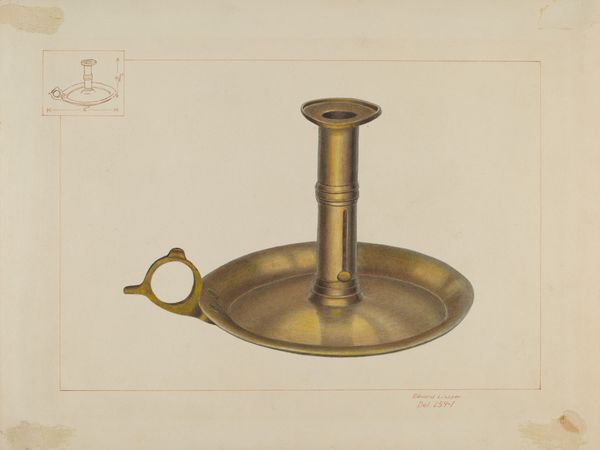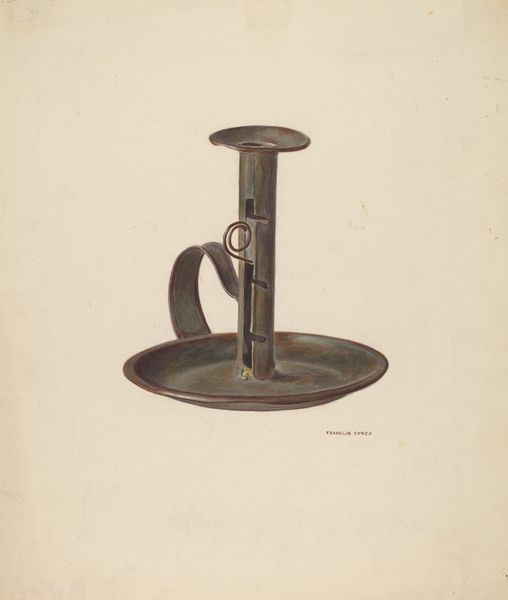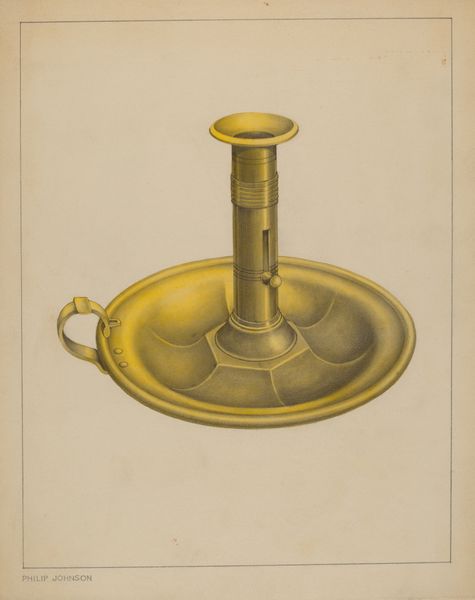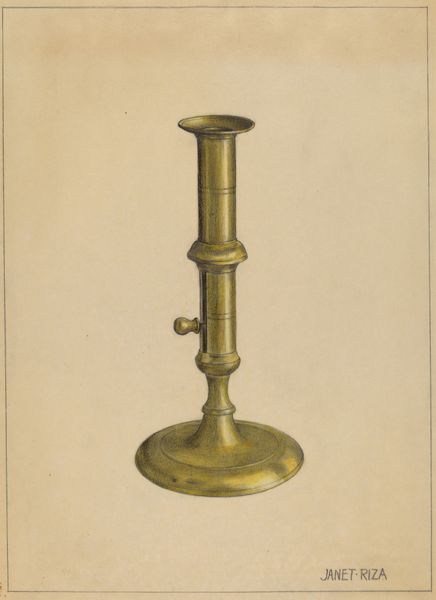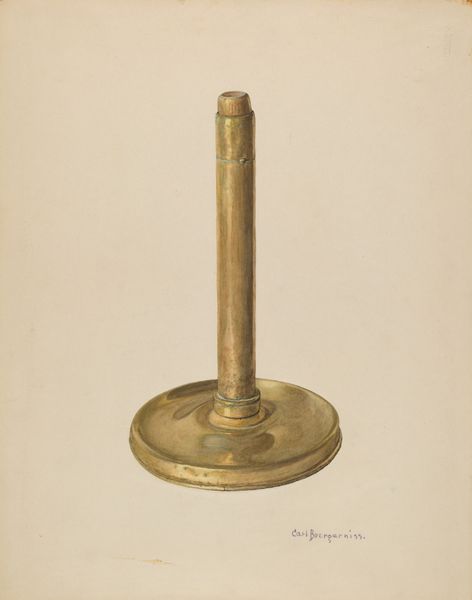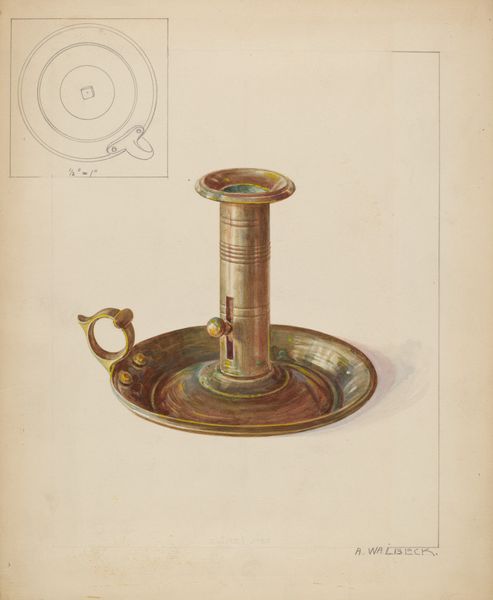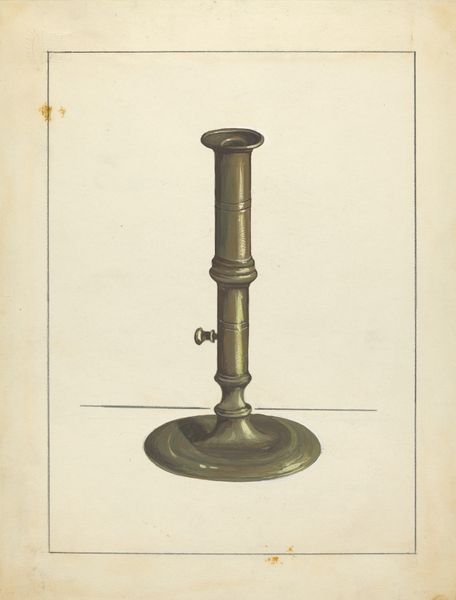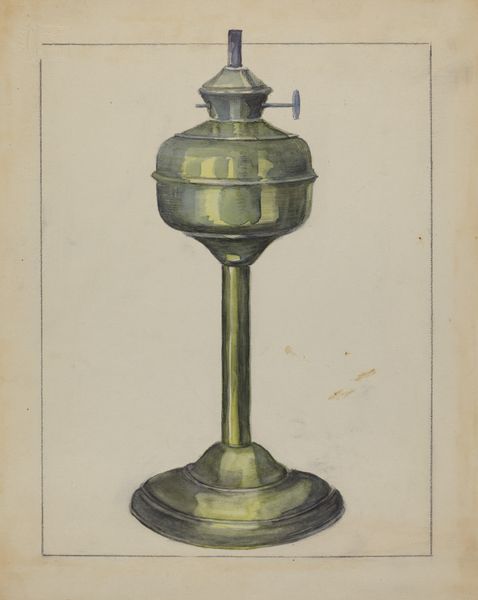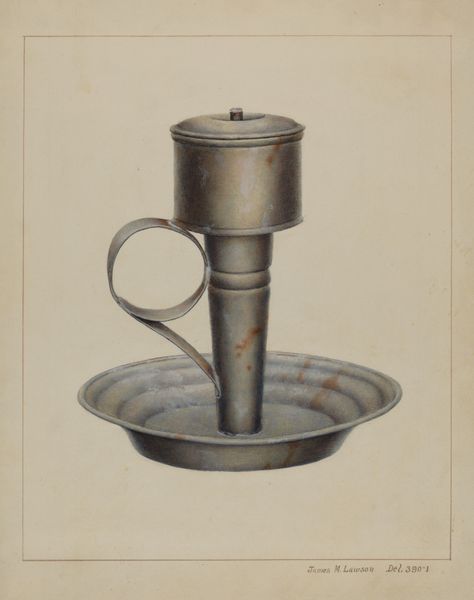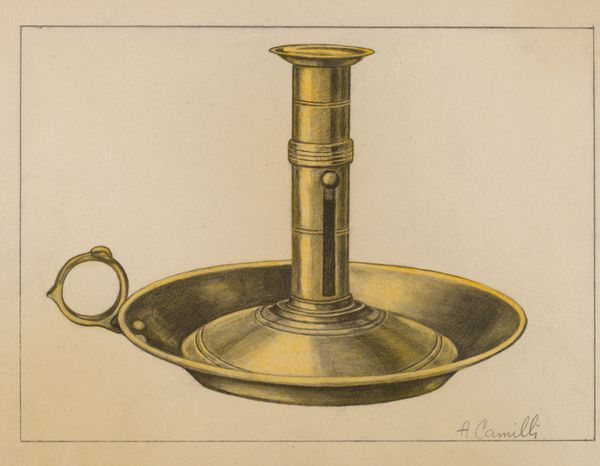
drawing, watercolor
#
drawing
#
watercolor
#
geometric
#
watercolour illustration
#
watercolor
#
realism
Dimensions: overall: 27.8 x 22.6 cm (10 15/16 x 8 7/8 in.)
Copyright: National Gallery of Art: CC0 1.0
Curator: Up next, we have a watercolor drawing entitled "Candlestick," dating from around 1936. Editor: The first thing that strikes me is the meticulous rendering of the light reflecting off what appears to be a brass candlestick. There’s something very…ordinary about it, and yet the artist’s attention transforms it. Curator: Indeed. The drawing itself showcases realism in rendering what would have been a functional, everyday object. It allows us to consider this humble object with newfound appreciation. Think about it, the candlestick emerges during periods of technological shifts from older light methods towards more efficient energy. They served to make space for an almost performative ambiance around ritual practices. Editor: Absolutely, the candlestick as an archetype carries a considerable amount of weight. Historically, the single flame has been connected to illumination, hope, guiding the lost. Even within a domestic setting, light overcomes darkness; and with light you reveal something new. But why a candlestick removed from any kind of setting? Curator: Contextually, images and portraits of light carrying sources are used, especially in propaganda, to depict their regimes as civilized and scholarly. This can be related to education reforms, an agenda widespread among regimes that lasted through the 1930s in particular. It appears apolitical at first, and it even might not be, but in the art world it all connects somehow. Editor: And if we consider it solely as a still life, the singular candlestick becomes about form and light. It almost strips it back to its fundamental symbolic and practical qualities. There's a quiet reverence in its observation. It’s very thought-provoking. Curator: It allows the viewer to bring their associations to the artwork. We see how an ordinary object in art holds social commentary and speaks about societal conditions. Editor: Ultimately, whether you interpret it as symbolic illumination or purely for its aesthetic, I've never given much thought to how evocative a simple candlestick could be. It sparks your curiosity regardless.
Comments
No comments
Be the first to comment and join the conversation on the ultimate creative platform.
